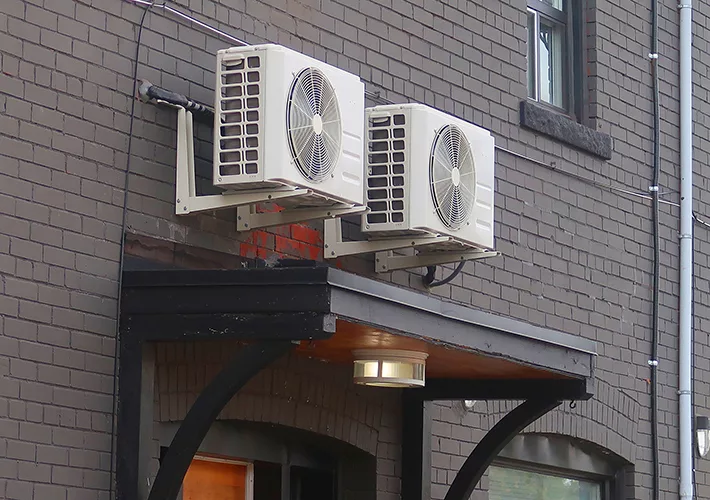The Inflation Reduction Act (IRA) was passed last year, and much has been written about how it fueled a manufacturing rebirth or reshoring in the United States, driven by the tax credits offered to North American producers of clean energy equipment.
For example, in August, the U.S. Treasury Department referred to www.whitehouse.gov/invest, which indicated that private investment of $111 billion had been made in clean energy projects and $139 billion in electric vehicle (EV) and battery plants. It also acknowledged the Creating Helpful Incentives to Produce Semiconductors and Science Act of 2022 (CHIPS Act) for stimulating $231 billion in new semiconductor and electronics projects.
During the summer, the government released details on another big piece: the accompanying measures relating to consumer and business incentives to support the electrification of buildings and vehicles. For engineers and construction professionals, the details show that these incentives are significant regarding the amount of money available and the nation’s long-term commitment to decarbonize the economy.
In general, the incentives are designed to remain in place into the 2030s; in some states, they are enhanced by generous state and utility programs. They seem to target many of the right areas for buildings and haven’t left much out.
Two primary categories are incentives under the Department of Energy’s Home Energy Rebate program (referred to as HOMES) and the High-Efficiency Electric Home Rebate Act (HEEHRA). The latter was previously known as the Zero-Emission Homes Act (ZEHA). It provides point-of-sale consumer rebates to enable low- and moderate-income households to electrify homes.
The HOMES program provides tax credits and rebates for people and businesses in different categories to electrify buildings and vehicles.
In addition, the 2006 solar investment tax credit program includes new long-term extensions that otherwise would have ended next year. It will now live on for many years; more on that below.
According to Canary Media’s Alison Takemura, tax credits are available now, and rebates from HOMES and HEEHRA start up late this year and in early 2024.
The Residential Clean Energy Property Credit under tax code 25D will lower consumers’ federal tax bills by up to 30% of the cost of a clean energy installation such as solar panels, battery storage and geothermal heat pumps, but they cannot receive more in tax credits than they owe the government for tax. However, if the tax bill isn’t big enough, savings can be carried forward to reduce taxes in future years.
The credit is uncapped, so whatever the project cost, consumers can claim the full 30%; the tax credit can be used for multiple projects in the same year.
Heat Pumps
Under HOMES, categories include heat pumps, heat pumps for geothermal, air conditioning, heating equipment, and more. Because they have their own category, heat pumps do not fall into the latter two categories: air conditioning and heating (see www.energy.gov/save).
Heat pump purchases that qualify can receive 30% of the cost paid by the consumer, up to $2,000/year, as a tax credit. Additional income-based incentives will be announced through the Home Energy Rebates program (for households below 150% area median income).
Consumers have a $2,000/year limit in total for heat pumps and heat pump water heaters (separate categories). For example, if you claimed $1,000 for a heat pump, you could not claim a 30% credit for a heat pump water heater in the same year. However, you could claim up to $1,200 for other incentives such as windows, doors, air conditioning, electric panels, etc., for up to $3,200 in credits for the year.
One program in Section 50121 is for home efficiency rebates and is performance-based. It awards rebates to homeowners and multifamily property owners undertaking whole-home retrofits to save energy. If they cut a home’s energy use by 35% or more, they qualify for 50% off the project’s cost, capped at $4,000.
Low-income homeowners, defined as earning less than 80% of the area median income, can qualify for twice as much, or up to $8,000 or 80% off the retrofit’s cost. A multifamily-building owner can use this $8,000/80% incentive if at least half of the building’s households have incomes below 80% of the area median income.
HEEHRA Home Improvements
Under HEEHRA, the 25C Tax Credit (previously named Nonbusiness Energy Property Credit) has been renamed the Energy-Efficient Home Improvement Credit. For improvements made after Jan. 1, 2023, households may qualify for a $1,200 annual tax credit (replacing the previous $500 lifetime limit), up to a cap of $600 per measure (with exceptions noted below.) The tax credit may equal 30% of the costs for all eligible home improvements made each year.
Homeowners can spread their home improvement projects over multiple years and apply up to $1,200 in annual tax credits. The credits are claimed on an individual tax return when filing the year after improvements are made.
Eligible measures:
Energy audits (up to $150 credit);
Air sealing and insulation;
Heat pumps (up to $2,000 credit);
Heat pump water heaters (up to $2,000 credit);
Electric panel upgrades;
Energy-efficient HVAC systems;
Energy-efficient windows and doors ($500 total for all exterior doors).

Still Coming
As of late September, some details were still being developed for some categories, such as induction cooktops, smart home tech and energy-wise clothing dryers, but at the time of writing, complete guidelines were not shown.
By the time you read this, they may be. This link provides a tool to calculate specific dollar amounts available for customer situations: www.rewiringamerica.org/app/ira-calculator.
• Solar. The IRA expanded and extended the Residential Clean Energy Credit, also known as the Solar Investment Tax Credit (SITC). The SITC was created in 2006. Since then, the U.S. solar industry has grown by more than 10,000%, increasing more than 50% yearly for the past 10 years. It has created hundreds of thousands of jobs and billions of dollars in domestic investments.
It was scheduled to end next year; however, the IRA extended it and increased the rebate from 26% to 30%.
It will continue at this level until 2032 before it decreases to 26% in 2033, 22% in 2034 and disappears in 2035. It is retroactive to solar energy systems installed during the 2022 tax year.
• Electric vehicles. The IRA provides a tax credit of up to $7,500 against the purchase of a new EV from 2023, and some vehicles purchased since 2010 also can receive the tax credit. In addition, used EVs can get up to $4,000.
1. New vehicles. All-electric, plugin hybrids and fuel cell electric vehicles purchased new in 2023 or later may be eligible depending on several factors, including the vehicle’s manufacturer’s suggested retail price, its final assembly location, battery component or critical minerals sourcing, and the owner’s modified adjusted gross income. To learn about all the specifics and calculate the credit, visit https://bit.ly/3F0nor5.
2. Pre-owned electric vehicles. The previously-owned clean vehicles credit of up to $4,000 is for the purchase of an eligible previously-owned clean vehicle with a sale price of $25,000 or less that is placed in service during a tax year by a qualified buyer.
To claim the credit, a qualified buyer must meet certain income requirements, and it must be the vehicle’s first qualified sale to a qualified buyer since Aug. 16, 2022, other than to the original owner. See tinyurl.com/y8wnmxhe for the details.
New Technology Update
Even before the IRA, the Infrastructure Investment and Jobs Act, the American Innovation and Manufacturing Act and the CHIPS Act were passed, the transition to the post-carbon economy and the accompanying disruption of huge sectors such as transportation and construction appeared to be driving high levels of innovation. Below are a few examples of new entries in the construction field.
• Improved air-source heat pump control system. Researchers are applying machine-learning techniques that include a backpropagation algorithm to enable users to have more control of the timing of heating and cooling in air-source heat pumps (ASHPs).
Scientists at the Pusan National University in South Korea say that ASHP manufacturers are traditionally reluctant to give users control. ASHPs using renewable energy as an auxiliary heat source require high-level technology for control optimization of variable-speed compressors.
The researchers are creating an artificial neural network-based optimum control logic system that can control the set temperature and operate without changing the main components of existing systems and increasing costs. It was applied to an ASHP equipped with a heat storage tank to store heat when the coefficient of performance is high and released it at a later stage when the heat pump is at a high load.
The heat pump is assumed to have a rated capacity of 9 kW in the heating mode and 8 kW in the cooling mode.
• Augmented reality to minimize on-site stoppages caused by design errors. About 80% of projects go over schedule or budget, while $450 billion is spent correcting design errors in the $12 trillion construction industry. A product called Visual Live (and others like it) seeks to solve these problems primarily with the help of augmented reality technology that lets everyone simulate a walkthrough of the completed project before they get to the jobsite.
It helps overcome the limitations of processes resulting in inadequate communication between professionals in varying disciplines, difficult-to-comprehend Revit models, the most updated design not being properly shared and explained, and a host of other difficulties. A handful of new real-time, 3D and interactive systems are now available and deployed by progressive construction firms to ensure accuracy and engagement by all parties involved in execution of the site plan.
• Geothermal energy breakthrough. This innovation example is from the energy world rather than construction. I’m also hesitant to share it because (as an environmentalist) some questions still need to be answered regarding the geothermal energy impacts. Nevertheless, the potential benefit of redeploying thousands of oil and gas trades as geo-energy developers is highly promising, and the latest milestone seems to be a game-changer.
Geothermal energy differs from geothermal heating and cooling because the product is electricity rather than the direct use of thermal energy in buildings. The former requires much deeper drilling than the latter.
A company called Fervo Energy has been working on a Google project for a 400-MW project since 2021. It announced a few months ago that it had drilled down to 7,700 feet and then turned to drill another 3,250 feet horizontally, to where the internal temperatures reached roughly 375 F.
The test implies the generation of 3.5 MW of electricity production; a single megawatt is roughly enough electricity to meet the demand of 750 homes at once. The Google project goal is to go online by 2028, generating the equivalent of enough power for 300,000 homes.
It is thought that this drilling breakthrough will dramatically lower drilling costs relative to generation capability, and prove the economic feasibility of developing geothermal energy within existing geological conditions present all over the world.
Exciting times indeed!






